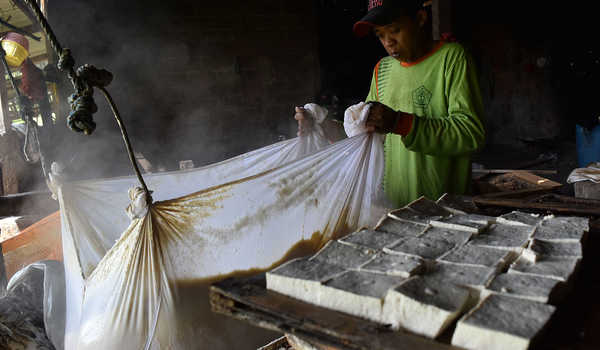Water is one of the environmental components needed for life. Water can cause a disaster for life on earth if it is not available in the right conditions, both in quality and quantity. Water pollution can be caused by heavy metals or salts derived from heavy metals that form toxic compounds in water. Heavy metals derived from industrial waste and natural processes that can contaminate water are Hg, Pb, Cd, Cr, Cu, Ni, and Zn in the form of toxic compounds. Water pollution control efforts due to industrial waste in Indonesia are currently experiencing constraints. One of the constraints is from many industries that have not done a waste treatment before discharging it into the environment. It happens due to the expensive installation and waste treatment operations. Moreover, several industries have human resources with limited environmental knowledge.
There are various methods for treating waste, including electrocoagulation, precipitation, and adsorption. The method most often used in reducing metal content is adsorption because of the low operational costs. Adsorption is the absorption of certain component concentrations on the surface between two phases. Adsorption is divided into physical adsorption and chemical adsorption. Physical adsorption has a relatively weak intermolecular force, whereas in chemical adsorption chemical formation occurs between molecules bound to the surface of the adsorbent and the adsorbate molecule.
Heavy metal waste processing in the modern era generally uses synthetic adsorbents which have high effectiveness and heavy metal ion selectivity. However, synthetic adsorbents have very expensive base material with high operational costs. So alternative, cheaper, and effective adsorbents are needed to adsorb various types of mixed heavy metal ions. One of the cheap and easily found alternative adsorbents is adsorbent from solid tofu waste. Tofu contains proteins whose composition consists of amino acids which can be used as an adsorbent for heavy metal ions. To increase the adsorption power, mechanical strength, and resistance to bacterial attack from the solid tofu waste, then immobilization using silica was carried out. As an immobilizer, silica can be applied in a continuous flow column.
The purpose of this study was to determine the efficiency of Ni (II) adsorption based on variations in pH and optimum pH with a batch method, variation in adsorbent height, and flow rate in a continuous flow column. This study also aims to characterize and identify absorbent functional groups using FTIR analysis. Variations in pH level were 2,3,4,5, and 6. The variations of the adsorbent height were 2 cm and 4 cm. Then, the variations of the flow rate were 5 mL/minute and 10 mL/minute. Determination of optimum pH was performed using Anova-One-Way statistical analysis and continued with Duncan test and descriptive analysis based on tables and graphs.
The adsorption efficiency of Ni (II) in a continuous flow column is explained using the descriptive analysis method. The pH PCZ is 8.4. The optimum pH is 6 with the adsorption efficiency at 51.78%. The adsorption efficiency of Ni (II) in a continuous flow column for the variation of the height of 2 cm and 4 cm adsorbents was 43.798% and 50.963%, respectively. The adsorption efficiency of Ni (II) in a continuous flow column for flow rates of 5mL / minute and 10mL / minute was 43.798% and 37.374%, respectively. The results of FTIR analysis from the adsorbent carried out before adsorption showed that there was a functional group C = O (strong vibration at 1651.07 cm -1 ), Si-O-Si (462.92 cm -1, 794.67 cm -1 and 1095.6 cm -1 ), OH (3425.58 cm-1 ), and NH (3749.62 cm -1 ). Meanwhile, the results of FTIR analysis after adsorption showed that there were Si-O-Ni bonds (956.72 cm -1 ) and Ni-N (410.85 cm -1 ).
From the results of this study, it was found that tofu waste in immobilized silica was an immobilizer, effective, and inexpensive adsorbent for Ni ions and other heavy metal ions.
Author: Handoko Darmokoesoemo
Details of research available at:
http://www.envirobiotechjournals.com/article_abstract.php?aid=9340&iid=268&jid=4
Handoko Darmokoesoemo, Eko Prasetyo Kuncoro, Ganden Supriyanto, Wulan Manuhara, dan P. D. A. Nasution, The Utilization of Solid Waste of Tofu Industry Immobilized by Silica as Adsorbent in Ni (II) Adsorption in Continuous Flow Column, Polution Research Journal 38 (March Suppl. Issue), 2019. Copyright © EM International, ISSN 0257-8050





